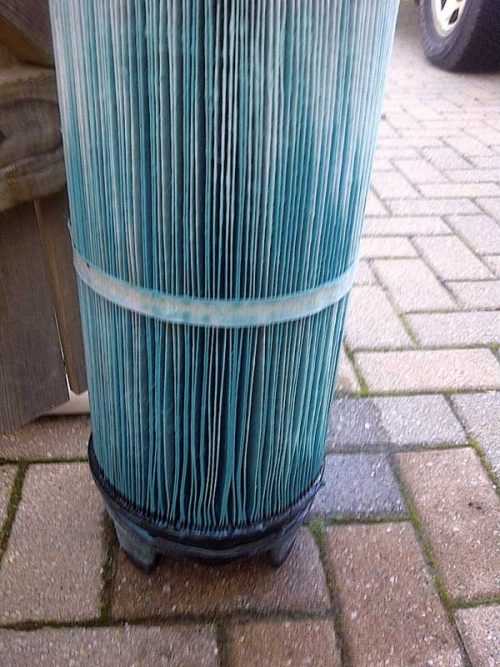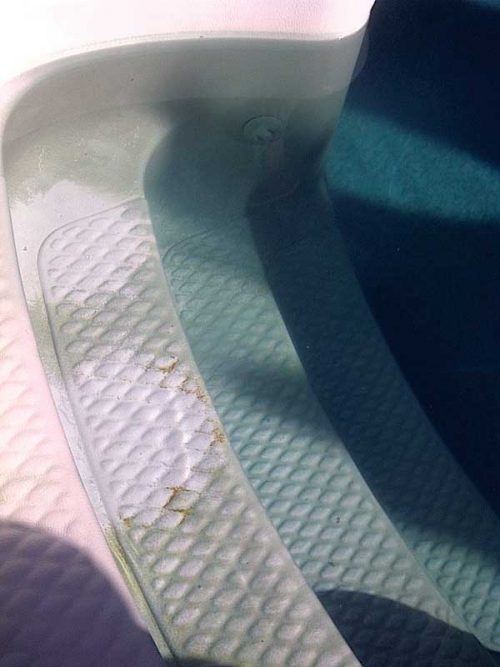-

Another easy technique is to use an uncoated vitamin C tablet, which consists of ascorbic acid. When the tablet is placed in the middle of a stained area, it will leave a ‘cleaned-up’ spot. Another easy technique is to use an uncoated vitamin C tablet, which consists of ascorbic acid. This method works well to remove iron stains. When the tablet is placed in the middle of a stained area, it will leave a ‘cleaned-up’ spot. Specialized citric acid products can also be used to lift the stain. However, service techs must remember these products are affected by high chlorine levels, so they should adhere to the maximum chlorine level recommendations on the label.
Protect

Once service techs are able to identify the product that can successfully lift the stain, they can safely use the product for removing the discolouration. As metal stains are removed from the pool surface, the metal ions will re-absorb into the water. Therefore, the metal will need to be removed from the water, but first technicians should take measures to prevent the metal from re-staining the pool surface.
Using a sequestering agent can prevent stain and scale formations. These products are designed to find certain dissolved metals and minerals and pull them into similar groups. Once sequestered, they are unlikely to be able to re-stain onto a surface. Sequestering agents can also help in the stain removal process. Pool techs must use products depending on the metal that needs to be removed from the water—whether it is iron, scale formations, or copper. Adding one of these products in the beginning is a critical step in the stain removal process. This ensures once the stain is removed, the sequestering agent is present in the water, ready to catch hold of the metals and prevent them from turning into stains again.
Lift
The stain removal product that worked best in the testing phase can now be applied. Service techs must ensure they follow the label directions as many products require special water balance parameters to work effectively. Note: Copper and scale formations require products with a very low pH and TA. For this method, one should install a heater bypass, which is designed to remove copper, to avoid damaging the copper heater core. Prepare the pool water to the recommended parameters and then apply the removal product(s) based on the process instructions and the pool’s volume. This technique removes metal stains from the pool surface. Further, the sequestering agent prevents the metals that have been removed from re-staining the surface.
Remove
Removing metals from the water can be tricky. That said, there are several products on the market that can help in this process. Cellulose fibre chemicals work very well with sand filters. They can also be used with cartridge and diatomaceous earth (DE) filters, but it is more difficult to use. Frequent cleaning of cartridges is also required. The chemical is applied to the skimmer and makes its way into the filter to rest on the bed of sand. The solution changes into a substance that will quickly trap metals as they flow through the filter, but will also absorb and filter everything else out of the water, including finer debris. This technique makes the water cleaner and removes metals, but can increase filter pressure quickly. When the filter pressure rises, service techs should backwash and re-apply the solution. This process should be repeated until the metal residual has disappeared.







